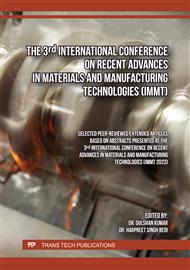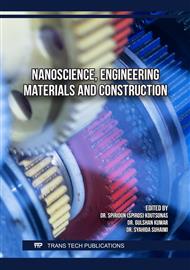p.51
p.59
p.79
p.91
p.105
p.115
p.129
p.139
p.149
Numerical Modelling of Nanoindentation in Cement Paste
Abstract:
The instrumented nanoindentation technique is widely used to investigate the local mechanical properties of cementitious composites. Due to its high-resolution load control and displacement sensing capabilities, this technique is increasingly being used to measure hardness, elastic modulus, creep parameters, and residual stresses that have been explored at micro and nanolevel. During the indentation of brittle materials, cracks may be generated around the impression, which depend on load conditions, material and indenter geometry. This work presents a simulation of the three-dimensional nanoindentation model established with finite element method and modified constitutive relation. The model is created to simulate on single phase (homogeneous) materials such as cement clinker (C3S and C2S separately) and the hydrated phase – Low Density CSH and High Density CSH separately that constitute the primary phases of cementitious matrix. Then numerical modelling (FEA) of indentation is conducted using the concrete damage plasticity (CDP) material model, with the constants calibrated for hardened cement paste. At the end, there was a good agreement when comparing the differences between the simulated and literature experimental results.
Info:
Periodical:
Pages:
105-112
Citation:
Online since:
April 2025
Authors:
Price:
Сopyright:
© 2025 Trans Tech Publications Ltd. All Rights Reserved
Share:
Citation:



